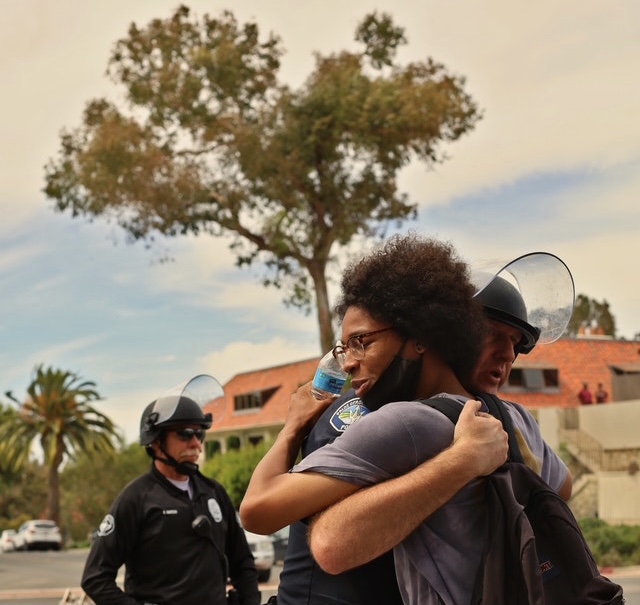Introduction
In the ever-evolving landscape of law enforcement, the concept of community policing has emerged as a pivotal strategy, aiming to foster a better relationship between the police force and the communities they serve. This blog post delves into the transformation of community policing over the years, highlighting its significance, methodologies, and the challenges it faces. It serves as a resource for law enforcement professionals seeking to understand and implement effective community policing strategies.
The Genesis of Community Policing
Community policing, as a concept, germinated from the need to bridge the gap between the police and the public. In its nascent stages, law enforcement was more reactive, with officers responding to incidents as they occurred. However, this approach often left communities feeling detached and mistrustful of the police.
The Shift from Traditional Policing
The traditional model of policing, often characterized by its ‘enforce and control’ methodology, gradually began to show its limitations. Communities needed more than just a force that responded to crime; they needed a proactive partner that understood and worked within the social fabric of the neighborhood.
The Evolutionary Milestones
1. The Introduction of the Beat Concept
One of the earliest shifts towards community policing involved officers being assigned specific geographic areas, or ‘beats’, which they would patrol regularly. This allowed officers to develop familiarity and build trust within the community.
2. The Problem-Oriented Approach
This approach marked a significant shift in policing strategies. It emphasized understanding the underlying causes of crime and disorder and addressing these root issues rather than merely responding to incidents as they occurred.
3. The Era of Partnerships
Recognizing that effective policing could not occur in isolation, law enforcement agencies began forming partnerships with other stakeholders, including community members, businesses, and other government entities. These partnerships aimed to collaboratively address community concerns and develop holistic solutions.
4. Integration of Technology
The advent of technology brought about significant changes in community policing. Data-driven policing, using analytics to predict and prevent crime, became possible. Social media platforms emerged as powerful tools for communication and community engagement.
The Pillars of Modern Community Policing
1. Community Engagement
Engagement goes beyond mere interaction. It involves actively listening to community concerns, involving residents in decision-making, and being transparent about policing activities.
2. Problem Solving
Modern community policing involves identifying specific concerns within the community and collaboratively developing strategies to address these issues, focusing on long-term solutions rather than temporary fixes.
3. Organizational Transformation
This involves restructuring law enforcement agencies to support community policing philosophies, including changes in management, staffing, and evaluation processes.
Challenges and Solutions
While community policing has its merits, it also faces several challenges:
1. Resistance to Change
Some officers and community members may be resistant to the new approaches introduced by community policing. Continuous training and education can help in mitigating these challenges.
2. Resource Allocation
Implementing community policing strategies often requires significant resources. Agencies may need to seek additional funding or reallocate existing resources to support these initiatives.
3. Measuring Success
Quantifying the success of community policing initiatives can be complex. Agencies need to develop clear, relevant metrics to evaluate the effectiveness of their strategies.
FAQ
Q1: How does community policing differ from traditional policing?
Community policing focuses on building relationships and working collaboratively with community members to solve problems, while traditional policing tends to be more reactive, focusing on responding to crimes after they occur.
Q2: What role does the community play in community policing?
The community plays a crucial role in community policing. Community members are encouraged to collaborate with the police in identifying and solving problems, providing insights and perspectives that officers might not have.
Q3: How do law enforcement agencies measure the success of community policing?
Success in community policing can be measured through various metrics, including reductions in crime rates, improved public perceptions of the police, and increased levels of community engagement and satisfaction.
Q4: Can community policing work in all types of communities?
While community policing can be adapted to various environments, its implementation and strategies may need to be tailored to address the specific needs and characteristics of different communities.
Q5: What are some common challenges faced in implementing community policing?
Challenges include resistance to change from both officers and community members, resource limitations, and difficulties in measuring the effectiveness of community policing initiatives.
Conclusion
The evolution of community policing represents a paradigm shift in law enforcement, emphasizing a collaborative, proactive approach to maintaining public safety and order. As communities and their needs continue to evolve, so too must the strategies and methodologies of community policing. Embracing this evolution is not just beneficial but essential for law enforcement agencies committed to serving and protecting their communities effectively.
In the dynamic landscape of law enforcement, understanding and adapting to the changes in community policing is not just a strategy but a commitment to the future of public safety and community partnership. Click here to get started today.








